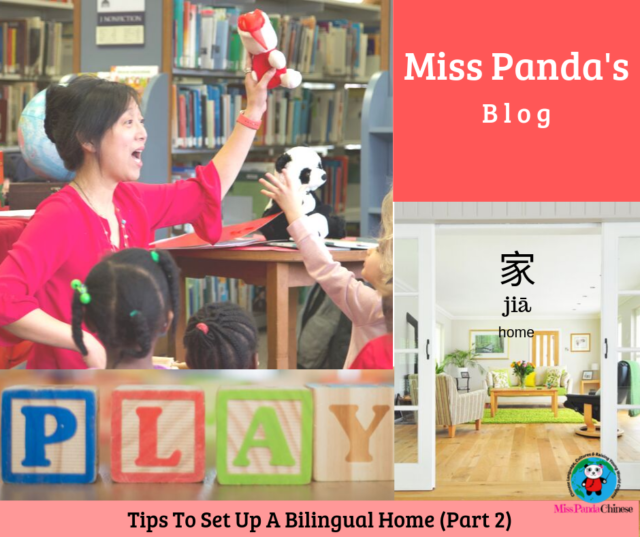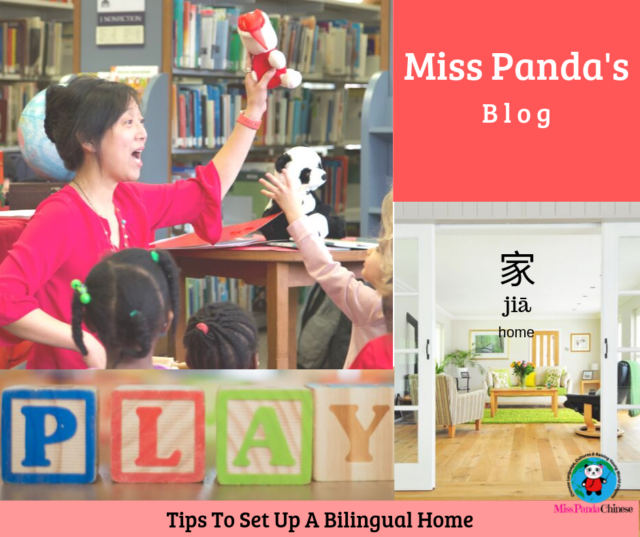Tips To Set Up A Bilingual Home Part 2
Home is where learning starts for every child. Here are the remaining four tips that you can apply to your target language learning area setup at home or in the classroom. We’ve talked about visual and sound last time and here we will start with the sense of smell.
Smell
The sense of smell helps kids to understand their world, and it helps with learning.
-
Chinese cooking ingredients:
You can experiment with soy sauce, sesame oil, black sesame seeds, white sesame seeds, cinnamon powder, Chinese rock sugar, and cooked and uncooked rice. For older kids, you can try anise, five-spice powder, garlic, fresh ginger, cilantro, and green onion. This is a pleasant and fun experience and you can easily embed various ingredients with STEAM topics. So, pick the items that you know will work best with your child.
-
Mystery Cup activity:
Pick 3 to 5 items from above and add each to a paper cup. Cover the top with paper. Poke a few holes on the paper and let the kids do a smell test. Does this smell good? Or, does this smell different? Add common cooking ingredients to the activity so there is a combination of the new smells and the smells that you child knows already. Use a map to show where the ingredients are from.
-
Does it smell like a flower? Ask if they know that Chinese people cook with these ingredients? Ask your child if green onions are in any Chinese dish that she has tried before. Cook a simple Chinese dish together and let your child show everyone the Chinese ingredients used in the dish. This can be a cultural experience.
Taste
Taste is an important sense and it tells kids the flavors of food. It is interesting to observe how children explore new food.
-
Chinese fruit:
Pomelo, tangerine, guava, dragon fruit, star fruit, Chinese pear, lychee, kumquat, and wax apple are a great start. Use a mix of fruit that you already have with a few of the Chinese fruits listed above. Visit an Asian grocery store in your neighborhood and explore the possibilities.
-
Guess The Taste Activity:
Prepare one slice of each fruit and place the slices on the plates. Ask your kid: Do you think it is salty, sweet, bitter, or sour? Talk about the taste difference between fruit. For example, Orange vs. tangerine. Chinese pear vs. D’Anjou pear. Make the prediction then taste them one by one.
-
For older kids, you can use dumplings, fried rice, tofu, Chinese cookies, or Chinese candy for the taste activity.
-
For older kids, you can have a Chinese cooking session and create a multisensory experience.
Touch
Touch plays an essential role in children’s development and learning. Kids learn by touching and feeling objects. You can use sensory activities to teach kids Chinese and help them to learn more about the Chinese language.
-
Asian Sensory bin: Fill a storage container with rice (round grains, long grains, dark grains, brown grains), Adzuki beans (red), Mung beans (green), or soybeans.
-
Add labels to the bin. Cover labels with rice or any grains you select. Ask your child to find the labels and match each item. If you have small dollhouse furnitures add them to the bin with labels!
-
Talk about everyday food Chinese people consume. Share with your child about Chinese people eat rice, drink soy milk for breakfast =, and have mung bean soup and Adzuki bean soup for dessert. Use a cookbook with this Show and Tell.
-
Drawing Chinese Activity: For older kids, fill a baking sheet with craft sand or shaving cream. Use the word and picture labels as a guide and let your child write the Chinese characters of their choice on the baking sheet. Don’t worry about how your child writes it. This activity is about exposure and experience.
Growth Mindset
Last but not least, the growth mindset. Learning is an experience. An experience that can lead your child to be more curious about and more interested in the Chinese language and culture you are planning to share with her. We, as parents, need to be a growth mindset role model on this learning journey. Give kids compliments for doing, trying, participating, and helping.
In a growth mindset, challenges are exciting rather than threatening. So rather than thinking, oh I’m going to reveal my weaknesses, you say, ‘WOW,’ here is a chance to grow. -Dr. Carol S. Dweck, Professor of Psychology at Stanford University
What will be the first two activities that you can try with your child tomorrow or next week? Write it down, do it, and take some pictures to share with your family and friends on your social media. It is your achievement when you make it happen.
The Miss Panda Chinese Guided Program is a learning community for parents and kids led by Amanda Hsiung-Blodgett, Miss Panda. Sign up here to receive your invitation.
Photo by Brooke Lark
Tips To Set Up A Bilingual Home Part 2


